1. Study
1.1. Usage stats
1.1.1. Decline of popularity
1.1.1.1. What was popularity related to?
1.1.1.1.1. Amount of new ideas?
1.1.1.1.2. Success of application of the ideas?
1.1.1.1.3. Promotion of the ideas in external places?
1.1.2. traffic sources and usage
1.1.2.1. referers and Wrongparking
1.1.2.1.1. E-democracy at municipal level?
1.1.2.2. username search
1.1.3. Activity of users
1.1.3.1. number of ideas, votes, comments
1.1.3.2. 34% of authors vote, 56% vote or comm
1.1.3.3. activity percentiles
1.1.3.4. average vs top users
1.1.3.4.1. 10% of ideas from single user
1.1.3.4.2. followed by 3%
1.1.3.4.3. top 10 users give 25% of ideas
1.1.4. Ideas
1.1.4.1. 2/3 voted in, 1/3 out
1.1.4.2. 89% answered
1.1.4.3. possible implementation 6% etc
1.1.4.4. subjects
1.2. Interviews & Q
1.2.1. Interview with .gov
1.2.1.1. Problems
1.2.1.1.1. does not facilitate discussion
1.2.1.1.2. small # of active users
1.2.1.1.3. ideas still of higher quality than typical .gov inbox
1.2.1.1.4. ideas not realated to working plan
1.2.1.1.5. “politicians decide, public servants execute”
1.2.1.2. Ideas
1.2.1.2.1. acceptance might be higher if ideas findable when a topic is actual
1.2.1.2.2. possibility for established inerest groups to demonstrate support
1.2.2. Interview with users
1.2.2.1. Problems
1.2.2.1.1. simplify the process
1.2.2.1.2. keep anonymity
1.2.2.1.3. make sure users return to participate in subsequent phases
1.2.2.1.4. find a way to create a buzz beyond TOM
1.2.2.1.5. engage citizens in wider discussions by linking to other sites and external documents
1.2.2.1.6. provide structure (categories, tags)
1.2.2.2. Need 4 dialogue
1.2.2.2.1. activate users and provide simple “campaign tools”
1.2.2.2.2. create ties with previous ideas
1.2.2.2.3. bring users back to discuss government responses and possibly continue the process with a new and improved idea
1.2.2.2.4. during the creation of new ideas find a means to inform users about possibly-related ideas that could have solved the same problem or might prove valuable reference
1.2.3. Survey
1.2.3.1. What did you know about TOM before presenting your idea?
1.2.3.1.1. TV, .gov web etc
1.2.3.1.2. idea was first action on site
1.2.3.1.3. mirroring of ideas on Delfi was mentioned
1.2.3.1.4. suggestions: promotion on other sites, "debate on TOM" under articles etc
1.2.3.2. How and why did your idea come into being and how did it get to TOM?
1.2.3.2.1. personal experience with particular problem
1.2.3.2.2. acute topic in media
1.2.3.2.3. idea presented alone, not much time spent
1.2.3.2.4. suggestions: support for activism, help to better formulate ideas, bring users back to site
1.2.3.3. What was your experience of using TOM like ?
1.2.3.3.1. generally positive
1.2.3.3.2. editing idea problematic
1.2.3.3.3. should users be required to authenticate with ID card?
1.2.3.4. Evaluate the comments on your idea, the voting process, and the answer received from the government?
1.2.3.4.1. lack of discussion
1.2.3.4.2. disengagement of officials
1.2.3.4.3. quality of comments considered high
1.2.3.5. What functions should be added to TOM in order to make it more convenient to use and more effective? What should be changed?
1.2.3.5.1. require auth by IDcard
1.2.3.5.2. should pseudonyms be allowed
1.2.3.5.3. public awareness
1.2.3.5.4. involvement of experts, moderators, opinion leaders in commenting the presented ideas and leading the discussion between TOM users and public officials;
1.2.3.6. What could TOM be used for (in addition to its present function)? What would you do with TOM given the possibility?
1.2.3.6.1. need for public awareness
1.2.3.6.2. integrate TOM with other services: a public law database, Draft Acts and statute amendments etc
1.3. Conclusions
1.3.1. Isolated pool, no incoming traffic
1.3.1.1. tie to external discussions
1.3.2. resulting in few dominating users
1.3.2.1. partly solved by more usage, user stats added for possible karma calc
1.3.3. small % of ideas with positive answer
1.3.3.1. "not in my working plan" - route also to parliament, interest groups
1.3.3.2. need for legal, lobby support (groups to use TID+?)
2. Development
2.1. TID+ requirements
2.1.1. open source
2.1.2. distributable
2.1.3. documentation for tech and policy implementation
2.2. Changes from TOM
2.2.1. Connections to outside discussions and promotion
2.2.1.1. Digging / saving
2.2.1.2. Finding outside discussions
2.2.1.2.1. Technorati
2.2.1.2.2. Manually adding links
2.2.1.2.3. Tracking referrers (with spam protection)
2.2.1.2.4. Trackback (with spam protection)
2.2.1.3. Including TID ideas on 3rdpart webs (RSS, embeddable XHTML)
2.2.2. Simplified idea process, adjustable quorum level
2.2.2.1. Description of new idea process
2.2.2.2. User can spec voting period
2.2.2.3. Administrator can decide, in which case ideas should be pushed forward.
2.2.2.4. Possibility to choose, if an idea gets accepted automatically or not.
2.2.3. Rejected ideas, reasons for rejections
2.2.3.1. Ideas should not be deleted
2.2.4. Categorization / tagging system
2.2.4.1. Both pre-set categories and freeform tags
2.2.4.1.1. Tags from users
2.2.4.1.2. Possibility to add tags by administrators
2.2.4.1.3. Categories editable by administrator
2.2.4.2. Support for external systems
2.2.5. Idea recycling
2.2.5.1. Start new idea if previous answer not satisfactory
2.2.5.2. Possibility to engage people from previous idea
2.2.5.2.1. Can be turned off by an administrator in case danger of spamming is considered too high.
2.2.6. Reputation and self-moderation system
2.2.6.1. User profiles
2.2.6.2. Key user stats next to comment / idea
2.2.6.3. Points for comments, hiding (not deleting) with negative sum
2.2.6.4. Solution to avoid trolling
2.2.7. Trackability
2.2.7.1. Authors notified about change in idea process
2.2.7.2. Commentors are notified about voting process
2.2.7.3. Users can have watchlists (RSS, email)
3. Intro
3.1. Who we are
3.1.1. Eero
3.1.2. Pets
3.2. euParticipation.eu
3.3. Overview of process
3.3.1. Original TOM
3.3.2. TOM -> Ideed
3.3.3. TID+
